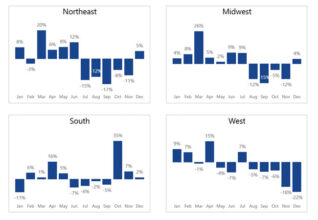OPEI concerned about EPA’s “WaterSense” program, issues call for action
Kris KiserBy Kris Kiser, executive vice president at the Outdoor Power Equipment Institute
The U.S. Environmental Protection Agency (EPA) is positioned to protect water in all forms, from ground water to underground sources to water coming out of the public’s tap. WaterSense, a partnership program sponsored by the EPA, was set up to work with local water utilities, product manufacturers, and retailers on the use of water-efficient products and practices among consumer and commercial audiences. Reinforced through a ‘WaterSense’ label, WaterSense, according to the EPA, “helps consumers easily identify water-efficient products in the marketplace.” WaterSense engineering standards for low-flow toilets, shower heads, irrigation equipment and other engineered products are practical and measureable.
However, a disturbing development has taken place in the WaterSense program that threatens to undermine the very water quality standards the agency was established to protect and potentially undermine the well-deserved value of the WaterSense label.
Under its WaterSense new home specification, EPA developed and released draft specifications for new home construction. Home builders that follow the specs will be able to market a ‘WaterSense’ home. The draft specs include restrictions on the amount of turfgrass that can be used on a home site. These specs are intended for implementation nationwide, border to border, coast to coast — with no exceptions. These specs do not take into account the fact that homes built in Seattle versus Oklahoma City are erected in vastly different climates.
Under current specs, no allowances for regional differences in climate or turf species exists; new home sites will be limited to 40-percent grass use on the site’s “landscape-able” area. It is a one size-fits-all specification. This means the amount of grass that can be planted on a Portland, Ore., home site would be the same as a home in Las Vegas. Imagine a Tucson desert landscape in Seattle and Boston neighborhoods. And, this also means, extreme desert locales would be allowed 40-percent turfgrass use on a home lot where it should not be used, requiring massive watering.
Our country is simply too large and complex, climate-wise, with multiple climatic zones for a single national government standard on grass use for home lawns.
Yes, water should be used in a responsible manner. Lush green lawns of Kentucky bluegrass may not be appropriate for desert landscapes, and the landscape industry should work toward best management practices that support maximizing environmental benefits in a conscientious manner. The key is to plant the right plant in the right place to maximize its environmental, lifestyle and economic benefits, not eliminate them.
But, with these specs, the EPA singles out turfgrass as environmentally harmful, unfairly labeling it as a “water hog,” despite the fact that drought-resistant turfgrasses are widely available in addition to the existence of large areas of the country that do not have rainfall or water availability issues.
Further, the myriad environmental benefits of turfgrass are ignored under these specs — from its well-documented carbon absorption and sequestering properties to superior water filtration, from its runoff and erosion control capabilities to dust and particulate matter capture properties, from its ability to combat the heat island effect to cooling our urban environments. These benefits –along with significant lifestyle benefits associated with a home’s yard for family use and pets — are somehow completely disregarded.
Yet, despite these facts, the EPA continues to declare war on turfgrass through such erroneous specs as the current WaterSense program promotes –even recommending mulch and artificial turf over grass green space. (Mulch and plastic grass do not filter air, remove water pollutants, produce oxygen, or sequester carbon dioxide. How is this better?)
Plants are real, living things not engineered or manufactured to a specific standard. But, rather, they are ever changing and adaptable to variable climatic conditions. And, managed responsibly, have enormous benefits.
EPA has held several public hearings on its WaterSense new home specification, where these landscape criteria have come under attack as being arbitrary, non-responsive to local and regional variances and not based on science. Turfgrass utilization has not been evaluated in a holistic environmental assessment. Yet, while the agency has altered the draft specification to reflect other industries’ concerns, the turf restrictions remain in place. EPA plans to finalize its WaterSense new home specification in November of this year.
If these criteria are adopted in their current form, they will have adverse environmental, lifestyle and economic consequences, and may actually create scenarios that use more water (not less) and severely depress jobs in a host of businesses involved in the $150-billion-a-year lawn and landscape industry.
In its current form, the landscape criteria of the EPA’s WaterSense program, which limits the amount of turfgrass on every home built in the United States, is simply bad public policy that will produce negative outcomes for our environment and will eliminate the green jobs for which the current Administration has been vocally supportive.
Kris Kiser is the executive vice president of the Outdoor Power Equipment Institute (OPEI). OPEI is the international trade association representing the $15-billion landscape, forestry, utility and lawn and garden equipment manufacturing industry.
What you can do about EPA’s “WaterSense” program
OPEI, the National Turfgrass Federation, and other interested parties have submitted comments to EPA, testified at hearings, and met repeatedly with agency staff on our concerns. These actions, while necessary, have not been productive with the agency.
However, the numerous inquiries the agency has received from Members of Congress about the specification’s draconian treatment of turf — the singling out, in effect, of this one type of groundcover — have earned the attention of EPA. These inquiries were prompted by letters and phone calls from constituents whose livelihood depends either directly or indirectly on turfgrass or from those who seek to maintain the lifestyle and holistic environmental benefits associated with home lawns.
We urgently recommend all interested parties to write to their congressional representative and senators, asking them to raise these issues with EPA and ask that the agency set aside the WaterSense outdoor landscape criteria for now, evaluate the science, and work with stakeholders to improve the product. Contact information for your representatives can be found at www.senate.gov and www.house.gov or you can contact Kris Kiser at OPEI at kkiser@opei.org.
Remind lawmakers that when properly managed and maintained, the benefits of turfgrass are multifold:
Captures water runoff and dust: Turfgrass does an excellent job of capturing water runoff and lessening dust and particulate matter pollution, versus alternatives such as hard surfaces, mulched areas and impervious or bare surfaces. According to a Council for Agricultural Science and Technology (CAST) 2006 publication, turfgrass not only decreases dust emissions but when it comes to controlling soil erosion, a live, functioning grass cover, including urban lawns, is a cost-effective option, since a grass root system is one of the most effective in soil stabilization because of the fibrous, dense character of its roots.
Lessens heat island effect: Turfgrass lessens the “heat island” effect, especially in urban areas. Urban areas generally have higher temperatures than surrounding rural areas, well known as the urban “heat island” effect. The EPA states that “the annual mean air temperature of a city with 1 million people or more can be 1.8–5.4° F (1–3° C) warmer than its surroundings. In the evening, the difference can be as high as 22° F (12° C).”
Captures, stores carbon in roots: Properly managed turf areas are significant carbon sinks. When kept in a growing state, carbon sequestration in turf areas can range anywhere from four to seven times the carbon emissions, according to a report, Technical Assessment of the Carbon Sequestration Potential of Managed Turfgrass in the United States by Dr. Ranajit (Ron) Sahu. See study at: http://www.opei.org/ht/d/sp/i/1428/pid/1428
Boosts the oxygen footprint: Turfgrass can boost your oxygen footprint. Compared to bare ground, non-green areas and lawn substitutes, such as painted concrete or even artificial turf, actual grass and green areas generate oxygen. For example, a turf area 50 feet by 50 feet produces enough oxygen to meet the everyday needs of a family of four, and each acre of grass produces enough oxygen for 64 people a day. (Source: http://www.turfgrasssod.org/lawninstitute/environmental_benefits.htm)




